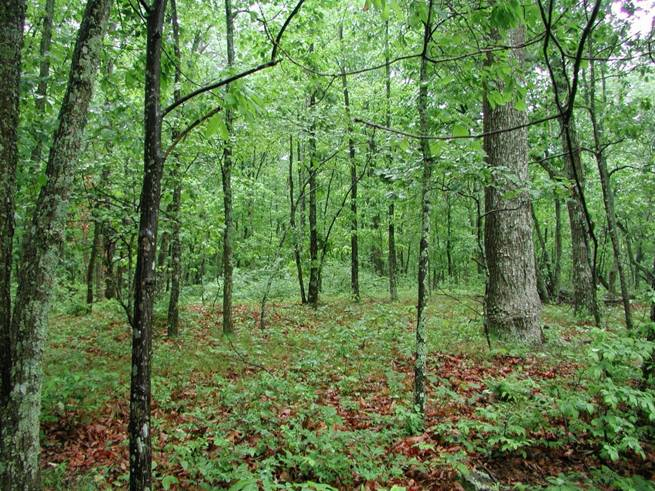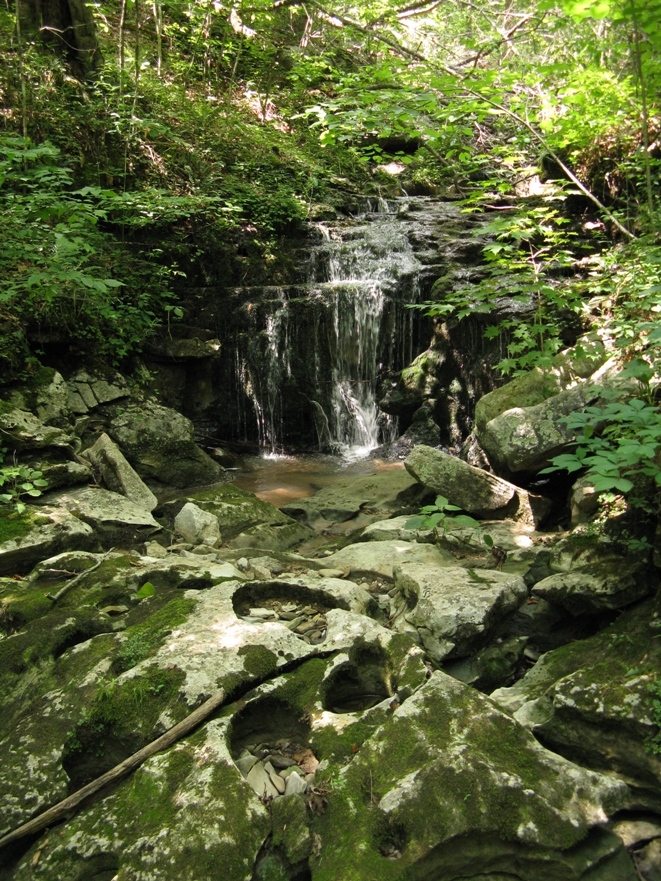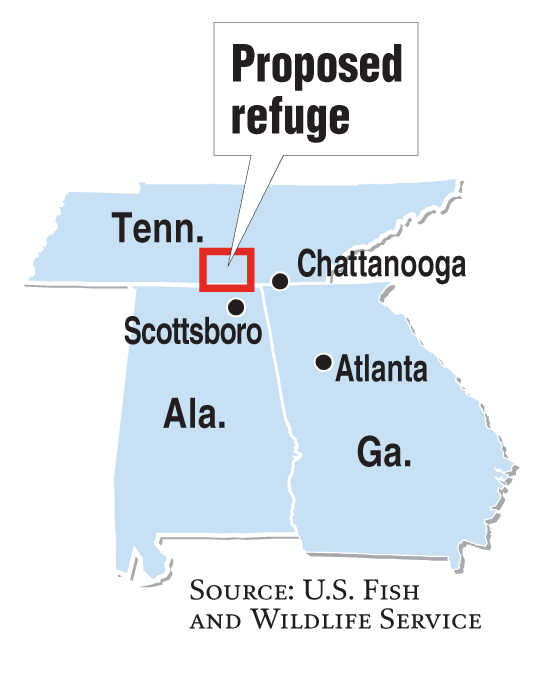WHAT'S NEXT* Feb. 5: A 3-8 p.m. CST public comment session at the Franklin County Library at 105 S. Porter St., in Winchester, Tenn.* April: Proposed public comment period on more draft documents* June: The U.S. Fish and Wildlife Service will submit documents to its Washington office for a final decision.Source: U.S. Fish and Wildlife Service
The Paint Rock River is one of the last free-flowing rivers in the Southeastern United States, and its Cumberland Plateau headwaters in Franklin County, Tenn., soon may become America's newest national wildlife refuge.
The proposed Paint Rock River National Wildlife Refuge -- about a 63-square-mile area adjacent to the Walls of Jericho -- is one of two Tennessee projects highlighted for action in the Department of the Interior's 2012 "America's Great Outdoors" report.
"It's a really important place," said Gina Hancock, director of the Nature Conservancy's Tennessee chapter. "I think Tennesseans in the region have been wanting to see something like this happen for a long time."
The river originates from three tributaries on a very wild area of the plateau in Franklin County -- Larkin Fork, Estill Fork and Hurricane Creek. From there, it flows south through another wild and sparsely populated area of Jackson and Marshall counties in Alabama to join the Tennessee River near the town of New Hope in Madison County Ala.
"It's certainly one of most biologically diverse freshwater watersheds in the world, and pretty much forested," said Dwight Cooley, the new refuge's project leader for Fish and Wildlife Service.
The U.S. Fish and Wildlife Service suggests the refuge will save some of the last remaining large tracts of Eastern deciduous forests, as well as protect and restore habitat for at least 15 federally listed species and three candidate species, and more than 40 state-listed species.
But it also will provide livelihoods by making new opportunities for wildlife-dependent recreation, including hunting, fishing, wildlife observation, photography and environmental education.
Plans for the 40,505-acre proposed refuge include components aimed at giving plateau landowners options to develop an ecotourism-based economy while protecting the natural resources from the normal threats from cliffside and vacation home development, Cooley said.
The Fish and Wildlife Service may reach out to landowners on about 25,120 acres to gauge their interest in selling their property, placing it in conservation easements or receiving Fish and Wildlife Service assistance to help manage habitat, said Cooley, who also is the refuge manager of Wheeler National Wildlife Refuge near Decatur, Ala.
Why the effort?
Nearly 35 million people visited national wildlife refuges in fiscal 2006, generating almost $1.7 billion in total economic activity and creating almost 27,000 private sector jobs producing about $542.8 million in employment income, according to a report called "Banking on Nature 2006: The Economic Benefits to Local Communities of National Wildlife Refuge Visitation."
Throughout Tennessee, more than 3.5 million participants engaged in one or more of three wildlife-related recreation activities (fishing, hunting, wildlife watching) during 2006 and spent more than $2 billion, the report states.
So planning for the new refuge -- which will link up with other publicly owned lands -- had help from another recent Paint Rock River initiative that had connections from Chattanooga, as well as Cumberland Plateau.
The Lyndhurst and Benwood foundations last year created a $6.75 million Southern Cumberland Land Protection Fund, and last month the Open Space Institute used a $500,000 grant from the fund to protect 11,364 acres of Paint Rock River watershed in Jackson County, Ala.
That property, known as Jacobs Mountain, was purchased under the name of the Nature Conservancy and turned over to Alabama.
It is 48 miles southwest of Chattanooga as the crow flies and contains large forest blocks and extensive underground cave systems that support rich animal and plant diversity, according to Peter Howell, executive vice president of the Open Space Institute.
Another Tennessee project highlighted for action in the "America's Great Outdoors" report is an example of how nature projects win hearts in this region.
The Tennessee Riverpark in Chattanooga has become so popular that city and county officials recently decided to extend its 13-mile length to 20 miles and take it from Ross's Landing to the foot of Lookout Mountain.
Although the Riverpark's inclusion as a prioritized project didn't bring any new money for the $15 million greenway project that's still $2 million shy of funds, it did bring in-kind support.
"The Department of the Interior will work with each of its key bureaus -- including the National Park Service, the Bureau of Land Management and the U.S. Fish and Wildlife Service -- to direct available resources and personnel to make these projects a reality," a Great Outdoors report states.




